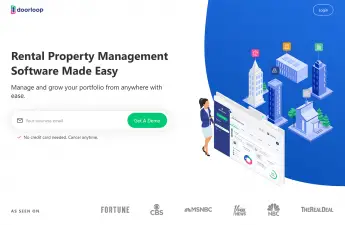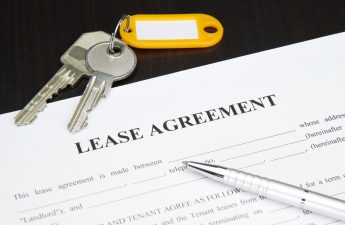A solid rental lease agreement is the foundation of a successful landlord-tenant relationship, ensuring clarity, protection, and a pleasant living experience. In this guide, we delve into the intricacies of residential rental agreements and apartment lease agreements, offering expert insights and practical tips to help you craft impeccable rental property leases. Whether you’re a seasoned landlord or just starting out, our comprehensive resource will empower you with the knowledge needed to create foolproof rental lease agreements that benefit both you and your tenants.
What Are Rental Lease Agreements?
Signing a rental lease agreement is a crucial starting point for a successful landlord-tenant partnership, bringing forth a set of terms and conditions that define the relationship. This legal contract lays out the rights, responsibilities, and expectations of both landlords and tenants, fostering a transparent and harmonious living arrangement.
Whether it’s for a residential property rental agreement or a lease agreement for your apartment, a rental property lease agreement grants stability and structure to both parties. For instance, by specifying the rental cost and the lease duration, landlords and tenants can plan their financial commitments and living arrangements with confidence. This structured approach ensures that everyone is on the same page, minimizing misunderstandings and conflicts down the line.
Why Are Rental Lease Agreements Important?
Rental lease agreements serve as crucial safeguards for landlords and tenants alike. By setting out explicit rules and responsibilities, these agreements preempt potential conflicts, promoting a positive tenant-landlord rapport. They establish a predictable rental income stream for landlords, ensuring financial stability. Moreover, lease agreements provide a roadmap for both parties, clarifying rent timelines, maintenance duties, and the lease duration.
Without residential rental agreements or a lease agreement for an apartment, things can get confusing. Disagreements can grow because nobody is sure about the rules. Landlords might not get rent on time, and tenants might not know what to expect.
Why Should You Use a State-Specific Lease?
Not all states have the same rules when it comes to renting. Rental laws can vary from place to place, and that’s why using a lease that’s specific to your state is a smart move. When you use a state-specific lease agreement, you’re tailoring your rental arrangement to match the laws that govern where your property is. By using a lease that’s designed for your state, you’re making sure you’re following the right rules and avoiding legal troubles down the road.
Creating a Rental Lease Agreement
Ensure State-Specific Precision
Before you set up a lease, make it state-specific. That’s because each state has its unique landlord-tenant laws, and a cookie-cutter lease won’t cut it. Your lease should comply with your state’s regulations to keep things legal and smooth.
Leverage State-Specific Property Management Software
When it comes to property management, the integration of technology has become pivotal. Notably, property management software solutions such as Avail, Azibo, EZLandlordForms, and Hemlane are effective tools for generating customized lease agreements tailored to your state’s legal framework.
![]() Also Read: 6 Reasons to Create State-Specific Lease Agreement Forms Using Property Management Software
Also Read: 6 Reasons to Create State-Specific Lease Agreement Forms Using Property Management Software
Choose Between Month-to-Month and Annual Leases
An annual lease means that you have a tenant locked in for a fixed term, which offers stability. On the flip side, a month-to-month setup provides the flexibility necessary for changing circumstances. Each has its perks, and your choice depends on your goals as a landlord.
![]() Also Read: Signing a Lease – Landlord Gurus Experience
Also Read: Signing a Lease – Landlord Gurus Experience

Utilizing Software for Lease Agreements
Property management tools offer landlords efficiency and accuracy. Using software for lease agreements offers several benefits. It ensures the legal compliance and customization necessary to match specific state regulations. It simplifies drafting, minimizes errors, and saves valuable time. The software’s digital nature promotes convenient storage, retrieval, and sharing of lease documents. Furthermore, it enables quick updates to adapt to changing laws.
![]() Also Read: Residential Lease Agreements: Best Software for Landlords
Also Read: Residential Lease Agreements: Best Software for Landlords
You may also come across free rental lease templates, which might be appealing to cost-conscious landlords. However, it may not be the best option for you. Most of the free templates do not outline the rights and responsibilities of both you and your tenant. It is also likely that they aren’t customized to the specific rules and regulations of your location.
Other Notices and Resources
Handling Rent Increases
When it comes to increasing rent, strategic planning is key. Our guide on “How to Write a Rent Increase Notice” provides valuable insights into the delicate process. This resource not only explains the importance of timing and clear communication but also offers tips on composing an effective notice that aligns with legal requirements.
Alternative to Eviction: Cash for Keys
Facing a challenging tenant situation? “Cash for Keys Instead of Eviction: What Landlords Need to Know” sheds light on a pragmatic alternative. Discover how offering financial incentives can lead to a smoother transition, saving time and mitigating potential legal complications.
Addressing Rent Delinquency
Rent non-payment can be daunting. “What to Do When Your Tenant Is Not Paying Rent” provides actionable steps to address this issue while adhering to legal boundaries. From communication strategies to lawful proceedings, this guide equips you to navigate the situation effectively.
Essential Lease Agreement Forms
Navigating the world of lease agreements? “What Forms for a Lease Agreement Should Landlords Use?” offers a comprehensive overview. It highlights the vital forms you should consider, ranging from rental applications to move-in and move-out checklists.
Emotional Support Animals and Pets
Differentiating Between ESAs and Pets
Understanding the distinction between Emotional Support Animals (ESAs) and regular pets is paramount for landlords. Our guide “Emotional Support Animal Housing Laws: A Landlord’s Guide” elaborates on how ESAs are recognized as therapeutic companions, distinct from pets.
Our video resource “Emotional Support Animals and Pets: Video Extra” addresses the delicate equilibrium between ESAs and pets within the landlord-tenant dynamic.
Considerations for Allowing Pets
Our “Should I Accept Pets in My Rental?” resource addresses the pros and cons of accommodating pets, helping you formulate a well-grounded decision tailored to your property’s dynamics.
Managing Pets and Rent Increase
For landlords seeking to increase revenue, “Best Ways to Increase Rent: Collect Fees for Pets in Rental Property” offers valuable insights. Learn about the potential of collecting pet-related fees to enhance your property’s profitability while accommodating tenants with furry companions.
Significance of Pet Screening
Navigating pets in rental properties requires diligence. “Why Pet Screening is Important for Landlords and Tenants” underscores the necessity of this process. Discover how efficient pet screening enhances transparency, enabling you to make well-informed decisions about potential tenants with pets.
Rental Property Lease Agreements: Frequently Asked Questions
Indeed, a lease is a legally binding document that outlines the terms and conditions of a rental arrangement. This agreement establishes the rights and obligations of both landlords and tenants for a specified period, fostering a structured and accountable landlord-tenant relationship.
When it comes to drafting a lease, simplicity and accuracy matter. The “Residential Lease Agreements: Best Software for Small Landlords” guide sheds light on efficient methods. This resource underscores the value of property management software that tailors lease agreements to state-specific regulations, simplifying the process and ensuring compliance.
While both serve similar purposes, there’s a distinction between a lease and a rental agreement. A lease usually runs for a fixed term, outlining specific obligations, whereas a rental agreement often involves a more flexible, month-to-month arrangement. Understanding this difference helps in choosing the right option for your property.
In the era of digital convenience, remote lease signing is viable. With technology playing a pivotal role, remote signing not only enhances efficiency but also simplifies the tenant onboarding process.
Rental Lease Agreements: Landlord Gurus Takeaway
Rental lease agreements stand as the cornerstone of successful landlord-tenant relationships. These legally binding documents establish rules, outline responsibilities, and provide a roadmap for a harmonious coexistence. By understanding the nuances of state-specific laws, harnessing technology to streamline drafting, and differentiating between various lease types, landlords can navigate challenges easily.
With the help of valuable resources, from emotional support animals to remote lease signing, landlords are equipped to foster transparent, compliant, and thriving rental arrangements. Whether you need an agreement for your residential rental property or a lease agreement for an apartment, a well-crafted rental property lease agreement safeguards interests and builds a mutually beneficial tenant-landlord partnership.
Disclosure: Some of the links in this post are affiliate links and Landlord Gurus may earn a commission. Our mission remains to provide valuable resources and information that helps landlords manage their rental properties efficiently and profitably. We link to these companies and their products because of their quality, not because of the commission.





Thank you for the important information and insights provided